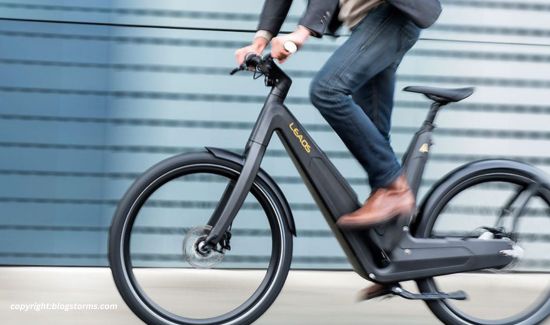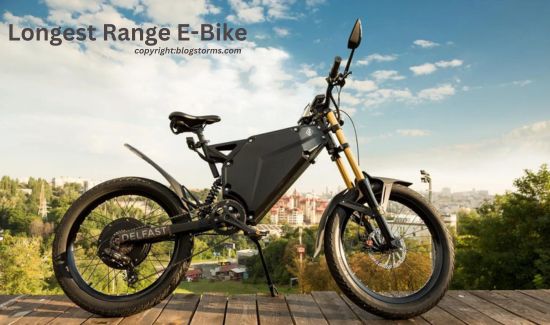E-bikes, also referred to as electric bikes have changed the way we look at cycling and commuting. They combine traditional cycling and motor-assisted transportation, e-bikes are a revolutionary option for increasing travel distances without stress and sweat of traditional bicycles. They are ideal for urban commuters or fitness-minded people who are just starting out E-bikes offer the promise of increased mobility and ease of use.
It doesn’t matter if you want to skip the rush hour, cut down on the carbon footprint of your trip or simply enjoy longer rides that require less effort, knowing the elements that impact the range of your e-bike is vital.
In this article we provide practical advice to help you choose an electric bike that not only fulfills your needs in practical terms, but also extends your reach and allows you to enjoy a longer ride and be more confident wherever your travels take you.
1. Understand Battery Capacity
E-bikes are ideal for short trips, allowing riders to travel further from their homes with little effort. But, a lot of potential customers are often confused about the notion of “range.’ One of the most frequent questions is how far can these bikes really be able to go on one charge? To answer this question, it’s crucial to look into the details in battery power.
The key to gaining further distances before your battery runs out is directly related to the capacity for storage of electrical energy, expressed in Watt-hours (Wh).
Top of Form
A higher watt-hour rating indicates that the battery is able to store more energy, thereby giving you a longer run time when you ride. The majority of electric bikes are equipped with 500-400W batteries that are capable of covering 100-120 km in a single charge. Contrarily the longest range ebike specifically designed to cover long distances can have batteries that can reach 3kW, which can extend the range to 350 and 400 kilometers in the ideal conditions.
If you prefer less complicated designs for city riding They typically provide an area of between 50 and 60 km per day. It is important to keep in mind that the actual distance will depend not just in the power of the battery, but as well on other external factors like the weather, terrain and the weight of the rider.
2. Consider Motor Efficiency
The performance of the e-bike’s motor is a different aspect that determines how long you can ride with a single charge. A motor that is efficient uses the battery’s energy more efficiently which results in longer trips. When you are choosing an electric bicycle choose one that has brushes which is more durable and effective than those with brushes.
3. Weight Impacts Range

The amount of weight on the bicycle, which includes the rider’s weight, greatly affects the range of its operation. Heavy bikes require higher energy for movement, particularly on terrain that is hilly or when speeding up. A lighter bike can increase the distance that you can travel. Also, take into consideration your personal size and weight as well as how this could affect battery performance and pick the bike that is able to support your weight, without causing significant reductions in performance.
4. The Role of Tire Type and Size
The role of tires is crucial in determining the performance of an electric bike. Large tires with a lot of tread are ideal for off-road riding but they may reduce the range due to a greater resistance to rolling. In contrast, smoother, softer tires are perfect for roads that are paved or urban since they provide less resistance, which can help save battery life. Pick the type of tire and size according to where you’re planning to go for the longest ride.
5. Select a E-Bike that has multiple assist levels
Modern electric bikes come with a variety of assist levels that control the amount of power the motor produces when you ride. Lower levels of assistance will significantly increase the battery’s life as the motor uses less energy. When you travel for longer, adjusting these settings will help you conserve energy throughout your trip making sure you’re powered for long durations of trip.
6. Regenerative Braking Can Help
Regenerative brake is a feature that allows e-bikes to recoup energy while slowing down or climbing. The technology transforms energy that is typically lost in braking use into electric energy that is later stored inside the battery. Even though the amount recovered is minimal but it could gradually extend its range on your electric bicycle. You should look for models with this feature, especially when your usual route has frequent stops or climbs.
7. Importance of Regular Maintenance
A properly maintained bike minimizes the stress on the battery and makes sure that all components perform at their best, which means less energy. Set a habit of examine your bike before and after your ride to identify any problems that could hinder the performance of your bike.
8. Choose the Right Terrain
The surface that you ride on will dramatically affect the amount of battery your electric bike uses. Smooth, flat surfaces demand less power, which can expand the range. However the terrain that is hilly or rough requires more power from the motor and can drain the battery faster. Consider your route accordingly and be aware of the battery’s limitations. Making sure you choose routes that have more arid terrain will save energy and improve the distance you’ll travel on one charge.
9. Accessorize Wisely
Accessories can add to your riding experience, but drain your battery, especially if they require electrical energy. Accessories like heated grips electric horns, as well as additional lighting should be utilized with care. Look for energy-efficient equipment and make sure they’re off when not required. Furthermore the weight of these accessories could increase the total load that the bike has to carry, in turn impacting the battery’s life. Select lightweight items that meet your requirements without compromising electric bike’s capabilities.
10. Learn to Read and Interpret the Range Indicator
But, these estimates may be affected by the current conditions. If you are aware of how your e-bike’s performance responds to various circumstances, you will be able to more effectively manage your battery’s time. For example, you may decide to slow down the speed or switch on a less assist option in the event that you observe your battery’s capacity of your battery is decreasing faster than you expected.
Conclusion
Selecting an electric bike with an extended distance requires an in-depth analysis of a variety of aspects that go beyond the battery’s capacity. From the performance of the motor and bicycle’s weight to the nature of terrain and maintenance schedule, every aspect is a major factor in the distance you can travel with one charge.
If you follow these guidelines you can choose an electric bike that not only suits your lifestyle, but also gives you the freedom and pleasure of riding long distances with no worries. Make sure that the ideal electric bike will provide you with greater than mobility. it could also be your way to explore new areas with confidence in its capacity to transport you to and from.
